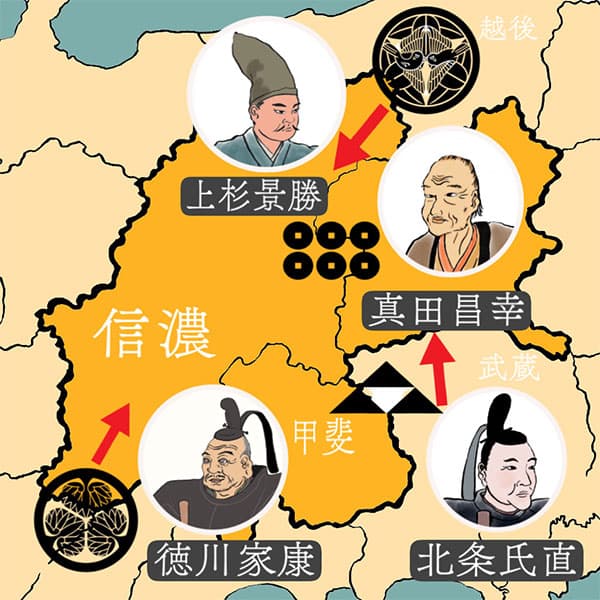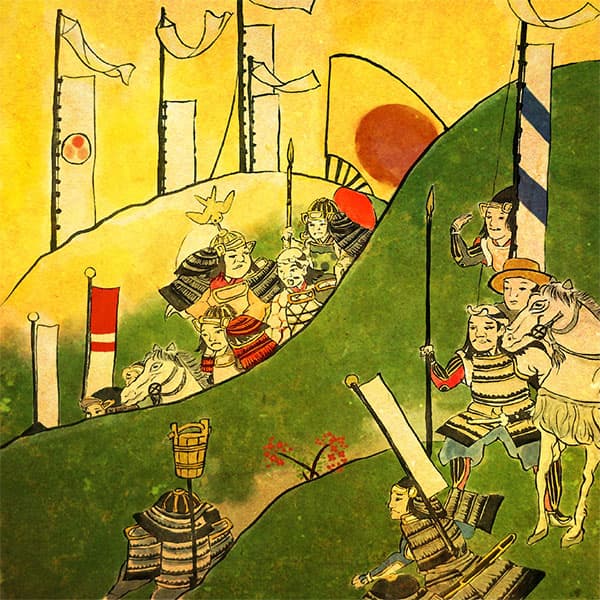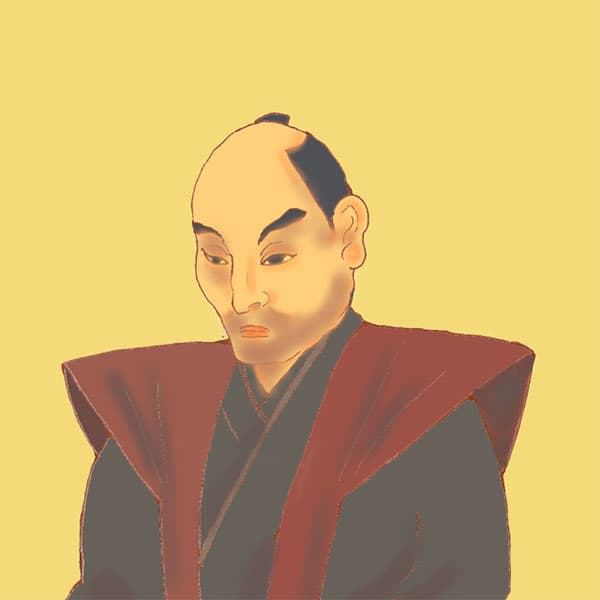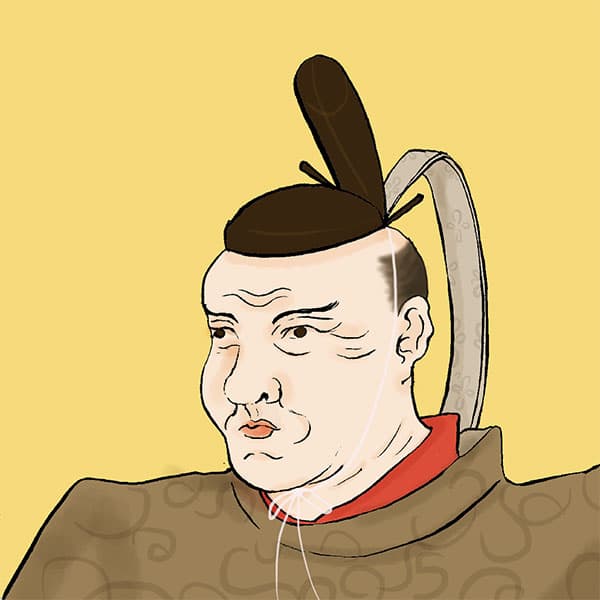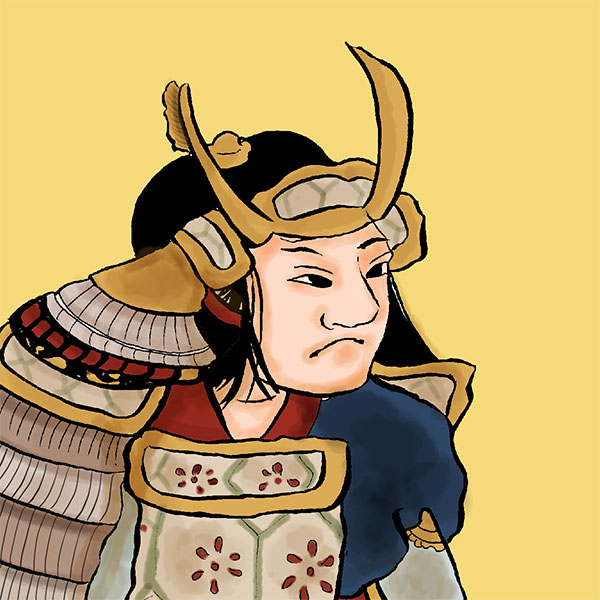- Matsumoto domainruled by six houses
- The Matsumoto domain was a 60,000 koku domain that existed in Nagano prefecture during the Edo period. It was ruled by six families until the end of the Edo period, including the Ogasawara clan, which was a feudal lord and the shugo of Shinano from the Muromachi period, the Mizuno clan, and the Toda clan. The domain office was located at Matsumoto Castle, which still stands today.

Matsumoto CastleMatsumoto City, Nagano Prefecture
- TOP
- Chubu
- Nagano Prefecture
- Matsumoto Castle
| Tenshu | Existing castle tower|National Treasure Gojo |
|---|---|
| Other name | Fukashi Castle, Karasu Castle |
| castle construction | 1504 |
| address | 4-1 Marunouchi, Matsumoto City, Nagano Prefecture |
| telephone number | 0263-32-2902 |
| Opening hours | 8:30 a.m. to 5 p.m. (changes depending on the season) |
| closing day | Year-end (December 29th to 31st) |
| Admission fee | Adults 700 yen / Elementary and junior high school students 300 yen |
Matsumoto Castle has a five-story castle tower that rivals Matsumoto Castle. The exterior is five stories, but the interior has six floors. The castle tower stands on the plains in the magnificent scenery with the Northern Alps as a backdrop.
- Access to Matsumoto Castle
- From JR Matsumoto Station bus stop, take the Matsumoto Electric Railway Bus Town Sneaker North Course for about 10 minutes and get off at the Matsumoto Castle Kuromon bus stop.
HISTORYMatsumoto Castle, a national treasure with beautiful black and white exterior walls
Matsumoto Castle is a flat castle located in Matsumoto City, Nagano Prefecture. Built between the Azuchi-Momoyama period and the early Edo period, the castle tower remains and is designated as a national treasure. Another name is ``Fukashi Castle'', and it is also known as ``Crow Castle''. Let's unravel the history of Matsumoto Castle.
- The Ogasawara clan, the guardians of Shinano, built Fukashi Castle.
- In 1334, Sadamune Ogasawara, who followed Takauji Ashikaga and participated in the overthrow of the Kamakura shogunate, was ordered to become the Shugo of Shinano as a reward and built Igawa-kan. It is said that Ikawakan was more like a large mansion than a castle. In 1459, Ogasawara Kiyomune built a mountain castle called Hayashi Castle, and built Fukashi Castle as a branch castle on the site of the current Matsumoto Castle. This is considered to be the predecessor of Matsumoto Castle.
In 1550, Takeda Shingen set out to conquer Shinano from Kai (present-day Yamanashi Prefecture), captured Fukashi Castle and Hayashi Castle, and expelled the Ogasawara clan.
After the Ogasawara clan was expelled, the land of Shinano came under the control of the Takeda clan. Takeda Shingen rebuilt Fukashi Castle and placed Nobuharu Baba in charge of the castle. - The Ogasawara clan recaptured Shinano and built Matsumoto Castle
- The Takeda clan ruled Shinano for 23 years. When the Takeda clan was destroyed by Oda Nobunaga in 1582, Shinano came under Oda Nobunaga's control. Later, after Oda Nobunaga was killed by Akechi Mitsuhide in the Honnoji Incident, Ogasawara Tosetsusai, the descendant of the Ogasawara clan, who was exiled, recaptured Fukashi Castle with the help of Kiso Yoshimasa and the backing of Uesugi Kagekatsu. .
After that, Ogasawara Sadayasu, the son of Ogasawara Nagatoki, who had the backing of Tokugawa Ieyasu, expelled Ogasawara Tōsetsusai, who had been a puppet of Uesugi Kagekatsu, and recaptured Fukashi Castle.
After regaining Fukashi Castle, Sadayoshi Ogasawara began building a castle town by enlarging the castle, dividing the land of the castle, dividing the territory of San-no-Kuruwa, digging a moat, and building an embankment. However, following Tokugawa Ieyasu's move to Kanto, Hidemasa Ogasawara, the lord of Matsumoto Castle at the time, also moved to Shimousa Koga.
After the Ogasawara clan moved, Kazumasa Ishikawa entered Shinano. Kazumasa Ishikawa and his son Yasunaga took over the renovation of Fukashi Castle, building the castle tower and adding stone bridges, Watari Yagura, Kuro Gate, Taiko Gate gate tower, etc.
At this time, the current form of Matsumoto Castle was completed.
However, Yasunaga Ishikawa was subsequently ousted due to the Okubo Nagayasu Incident, and Hidemasa Ogasawara was once again transferred as the lord of Matsumoto Castle.
After that, Matsumoto Castle became the domain office of the Matsumoto clan throughout the Edo period. - Matsumoto Castle in the Edo period
- Matsumoto Castle was renovated several times during the Edo period, changing from a castle used for war to a castle used for politics. In addition, in 1727, the Honmaru Palace was destroyed by fire, and from then on, the Ninomaru domain came to be ruled by the domain.
- Matsumoto Castle after the Meiji era
- In the Meiji era, Matsumoto Castle was put up for auction and was in danger of being demolished. However, it was bought back by volunteers, including Minamisaku District Mayor Ryozo Ichikawa, and the crisis was averted.
However, as the Ninomaru Palace was destroyed by a suspicious fire and the castle tower was significantly tilted, large-scale repairs later called the ``Meiji Great Repairs'' were carried out from 1903 to 1913. Masu.
In addition, most of the main moat was filled in for reasons such as securing residential areas.
Later, in 1930 (Showa 11), five buildings, the castle tower, Inui small castle tower, Watari turret, Tatsumi turret, and Tsukimi turret, were designated as national treasures under the National Treasure Preservation Act.
After the war, a second major repair was carried out from 1950 to 1955.
In the Heisei era, the Kuromon, Ninomon, Sodebei, and Taikomon Masugata, which had been demolished, were restored, and the castle regained its appearance similar to the Edo period Matsumoto Castle.
In 2006, it was selected as one of Japan's top 100 castles. - Current Matsumoto Castle
- Today, Matsumoto Castle is both a tourist attraction and a place of relaxation for people. There is a fee to enter the Matsumoto Castle Tower, but the surrounding Matsumoto Castle Park is free.
Matsumoto Castle Park is home to a variety of plants, including cherry blossoms and wisteria, and hosts various events such as the Cherry Blossom Festival.
In addition, food-related festivals such as the Soba Festival and joint tea parties are held, and the area is crowded every time.
Read about incidents related to Matsumoto Castle
Read biographies of people related to Matsumoto Castle
History of the Matsumoto clan, with Matsumoto Castle as its domain office
| Domain office | Matsumoto Castle |
|---|---|
| old area | Chikuma District, Shinano Province |
| stone height | 60,000 koku |
| Fudai/Tozama | Fudai |
| main lord | Mr. Ogasawara, Mr. Ishikawa, Mr. Matsudaira, Mr. Hotta, Mr. Mizuno, Mr. Matsudaira (Mr. Toda) |
| Estimated population | 120,000 people (first year of Meiji) |
Kazumasa Ishikawa, who served Tokugawa Ieyasu, built the castle, but it was destroyed after only two generations. It was followed by Fudai and Okinawa clans, including the Ogasawara family and the Matsudaira family.
Matsumoto Castle: A jet-black castle awarded three Michelin stars
Matsumoto Castle is a jet-black castle in Nagano Prefecture. It is a flat castle with a five-tiered, six-story castle tower, and its graceful appearance with the Northern Alps as a backdrop has earned it three stars in the Michelin Green Guide Japan. Here we will explain the charms of Matsumoto Castle, which has also been designated a national treasure.

- Exploring the history of Matsumoto Castle
- Matsumoto Castle, a flatland castle in Matsumoto City, Nagano Prefecture, is said to have been based on Fukashi Castle, which was built in 1504. It was later ruled by the Takeda clan, and then by Kiso Yoshimasa, a subordinate of Oda Nobunaga. It was then taken over by Ogasawara Dosetsu, who had the backing of the Uesugi clan, and was later recaptured by Ogasawara Sadayoshi, who was Dosetsu's enemy, and renamed Matsumoto Castle.
Later, Hideyoshi Toyotomi ordered Kazumasa Ishikawa to enter the castle. Kazumasa and his son Yasunaga Ishikawa worked on the development of the castle and the expansion of the castle town over two generations. During the Edo period, the castle was passed down to the Ogasawara, Toda, and Mizuno clans, and after it came under direct control of the shogunate, it was ruled by the Toda clan until the Meiji period. - Matsumoto Castle's highlights: 1. Beautiful jet black
- The biggest attraction of Matsumoto Castle is its black castle tower! Of the 12 remaining castle towers, only Matsumoto Castle and Matsumoto Castle have a five-story tower, making it one of the oldest castles in Japan, alongside Inuyama Castle, and competing for first and second place among the remaining castle towers.
The reason it is black is because the bottom of the castle walls are covered with black lacquered siding. To protect the plaster walls, which are vulnerable to rain, boards were attached and then painted black with waterproof lacquer, so it is literally a "jet black" castle. The upper half is white plaster, and the contrast between black and white is beautiful.
According to one theory, the castle was painted black to suit Toyotomi Hideyoshi's tastes. During Hideyoshi's time, gold leaf tiles and gable ornaments were used, and the castle was painted black to make the gold stand out. As lacquer is easily damaged by ultraviolet rays, the walls of Matsumoto Castle's main tower are repainted every year between September and October. The repainting process is quite interesting to watch, but the areas being repainted are covered with white sheets, so if you want to take beautiful photos, it's best to visit at a different time of year. 


- Highlights of Matsumoto Castle 2. The complex-type castle tower
- The castle tower is a complex of linked structures, all of which are designated as national treasures, consisting of the main tower, Kenko tower, the connecting tower that connects the two towers, and the Tatsumitsuke tower and Tsukimi tower that were added in the early Edo period. The two towers and the connecting tower, built at the end of the Sengoku period, have 115 small windows, such as gun slits and arrow slits, to withstand war, and 11 stone drops for firing guns.
On the other hand, the other two towers were built in the early Edo period and do not have such mechanisms for attack. Among them, Tsukimi Tower has a very open atmosphere when its Mairado door (thin wooden door) is removed, and the exterior has a vermilion balustrade surrounding it, making it an elegant structure befitting a world without war.
You can see inside the castle except for the Kenshi castle tower, which is currently closed to the public due to an earthquake resistance assessment, so you can get a feel for the construction of buildings from different eras. The weapons such as guns and armor on display inside are also worth seeing. 


- Matsumoto Castle Highlights 3. The restored gate
- One thing to note about Matsumoto Castle is the "Masugata Gate" which was used to defend the castle. It is surrounded by stone and earthen walls in a square shape, with double gates on the inside and outside, and the space surrounded by the gates, stone and earthen walls is shaped like a square. Enemies would be lured in here and then attacked from all sides with guns and other weapons.
The Kuromon Gate, restored during the Showa era, is an important square gate leading to the Honmaru. In fact, since there are no blueprints from that time, it was rebuilt based on the Watariromon Gate of Nagoya Castle. Of particular note is the roof of the gate, which reused tiles that were preserved during the dismantling and repair work, and is lined with rounded roof tiles bearing the family crests of past castle lords.
The square gate "Taikomon" at the entrance to Ninomaru Palace was restored in the Heisei era. It is made of 400-year-old cypress. The 22.5-ton giant stone "Genbaishi" on the stone wall next to the Taikomon was so named because it was transported by Ishikawa "Genba no Kami" Yasunaga, who built Matsumoto Castle. 


- Highlights of Matsumoto Castle 4: Honmaru Garden and the Matsumoto Castle Hospitality Team
- Matsumoto Castle is located in a paid viewing area. After purchasing a ticket and passing through the Kuromon Gate, you will see the Honmaru Garden, where you can enjoy seasonal flowers such as plum, cherry, azalea, peony, and wisteria. In particular, in spring, events are held to light up the cherry blossoms in the park and the outer moat, including the weeping cherry tree "Komatsunagi no Sakura," which is associated with the story of Kumamoto Castle lord Kato Kiyomasa, and many people visit.
The "National Treasure Matsumoto Castle Hospitality Team" will be appearing in the Honmaru Garden from 8:30 to 16:00. This is your chance to meet the third lord of the castle, Ogasawara Hidemasa, and his wife, Princess Tokuhime. If you see them, be sure to take a commemorative photo. 


- Recommended photo spots at Matsumoto Castle
- There are many recommended photo spots at Matsumoto Castle. There are camera marks on the Matsumoto Castle Park map, so we recommend taking photos from there.
One of them is to take a photo from the south of Matsumoto Castle, where you can enjoy the collaboration between the Alps and Matsumoto Castle. This spot is before crossing the bridge in front of the ticket office, so don't forget to take a photo. Also, if you take a photo from the southwest of the castle, you can get a beautiful shot of the connected complex castle tower. We also recommend taking photos from this spot when you are using projection mapping. In addition, if you take a photo from the west side, you can enjoy the contrast between the bright red buried bridge and the castle. 



- WriterNaoko Kurimoto(Writer)I am a former travel industry magazine reporter. I have loved history, both Japanese and world history, since I was a child. I usually enjoy visiting temples and shrines, especially shrines, and often do ``pilgrimages to sacred places'' themed around historical figures. My favorite military commander is Ishida Mitsunari, my favorite castle is Kumamoto Castle, and my favorite castle ruins is Hagi Castle. My heart flutters when I see the ruins of battle castles and the stone walls of castle ruins.






















